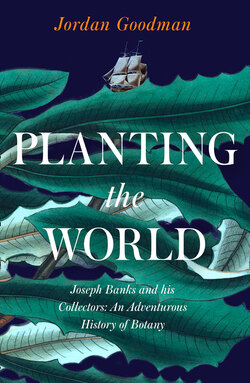Читать книгу Planting the World - Jordan Goodman - Страница 17
Prologue
ОглавлениеWhen I first thought of writing this book, I had in my mind an image of Joseph Banks that I had pieced together from the various biographies that had been written about him in the twentieth century and supplemented by other accounts in which he appeared as a major character. The image I formed was of a man who was an autocratic administrator; a man of great personal wealth who manipulated his powerful connections at the highest level in order to make Britain the greatest nation on earth and its empire second to none; a man who used science for these ends; a man who could be seen and caricatured as a powerful spider at the centre of an enormous web.
This was the image I brought to my research, but as I began reading through Banks’s voluminous extant correspondence – letters to and from him – and the endless amount of scribbled-on paper, in the form of notes, lists, draft reports and memoranda – the image of the powerful spider at the centre of the web began to dissolve, to be replaced by a radically different impression, that of someone who was less authoritarian, less one-dimensional and less in control; who was more responsive and less manipulative; someone whose relationships were more personal and informal; and who was more appealing, in short, more human. Ultimately, Banks was a figure who represented the culmination of an era that was on the wane, an era when an individual could still, by amassing a great library and mastering its contents, provide critical aid and information to a great variety of projects in the wider world.
This book is not a biography although I do provide a biographical sketch in the introduction. I am focusing on just one of Banks’s many interests, albeit the central and most fervently held, his love for plants. This passion combined the scientific study of plants and his personal dedication to supplying King George III’s garden in Kew with the finest examples of the world’s botanical bounty.
As a young man, Banks had gone as a naturalist on three important scientific voyages, one of which was an unprecedented circumnavigation of the globe lasting almost three years. Yet, after he was thirty, he never went to sea again; it is tempting to see his enthusiasm for sending other men to collect and move plants across the seas on his behalf as a vicarious reliving of his earlier experiences.
Many of these collectors were gardeners who had worked at Kew, but others, mostly from Scotland and the European continent, were trained botanists; a few were ship’s surgeons and government officials, and others who having no specifically relevant occupation had become fascinated by natural history. Banks chose some of these men to travel and collect on his behalf; but many others contacted him to volunteer their services.
The twenty-two chapters in this book, based primarily on Banks’s correspondence and jottings, tell the stories of these collectors: the different ways in which they entered Banks’s life, their practices and problems across the world – how they interacted with their shipboard companions, especially the ship’s captain; how they decided which plants to gather; how they found them and how they tried to move them by ship across the oceans. Banks referred to these activities as his favourite project and to himself as a projector: his role, he once explained, was no more than to facilitate their execution. Though the projects did not always begin with botany in mind, nor for that matter were they necessarily even initiated by Banks, once he became involved, either by being invited or by just joining in, he gave them a botanical twist.
Building chronologically and across the world, layer by layer, each chapter reveals how and when Banks became involved; what he did to give the projects a botanical direction, and with what consequences. At the same time, it recounts, where possible in their own words, how collectors pursued their instructions, how they conducted themselves far away from home, how they interacted with their environment, local materials and particularly local people. The results were not always satisfactory: collectors, like their plants, often did not survive the ordeals that beset them.
Banks, like his contemporaries, took it for granted that plants were there for the taking. They did not concern themselves with questions of ownership; at the same time, they were also generally unaware of the consequences of transplantation and the introduction of foreign species into new habitats. They assumed it was beneficial.
Banks was immensely curious, and it is his desire for knowledge that drives the narrative of the book. People and plants were the motivating force for his actions and sent his mind and his collectors exploring the world and its oceans.
